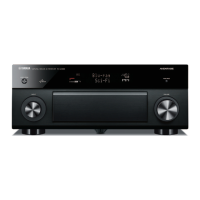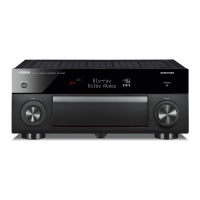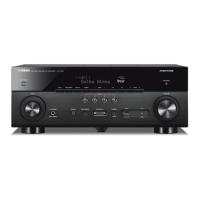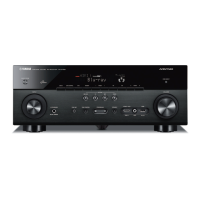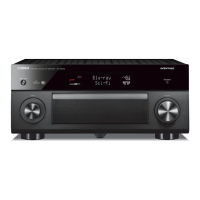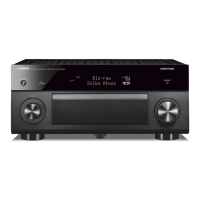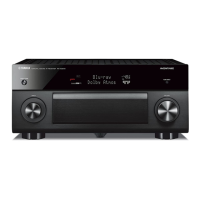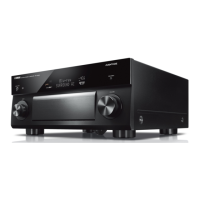Do you have a question about the Yamaha Aventage RX-A1050 and is the answer not in the manual?
Step-by-step guide for initial setup, including speaker and device connections.
Guidance on speaker placement and various system configurations for surround sound.
Instructions for installing front height, overhead, and Dolby Enabled SP presence speakers.
Instructions for connecting speakers to the unit, including impedance settings.
Setting up a bi-amp connection for higher quality sound from front speakers.
Combining with an external power amplifier for an extended system.
Using excess amplifiers for stereo speakers in another room.
Configuration for 5-channel bi-amplification in the main zone.
Configuration for 5-channel bi-amp with surround back expansion.
Configuration for 7-channel system with Zone2 speakers.
Connecting Zone2 speakers to the EXTRA SP terminals for multi-zone audio.
Connecting the TV using component or composite video cables.
Connecting video devices like BD/DVD players and game consoles.
Connecting playback devices via HDMI for optimal signal transmission.
Connecting video devices using composite video cables.
Guide to measuring speaker settings at one listening position.
Guide to measuring speaker settings at multiple listening positions.
Steps for turning on devices, selecting input, and starting playback.
Choosing which HDMI OUT jack to use for signal output.
Choosing which settings (sound, video, volume etc.) to include in SCENE assignments.
Optimized sound programs for movies, TV programs, and games.
Achieve surround sound with front speakers when rear placement is not possible.
Experience surround sound effects with stereo headphones.
Play back sources without sound field effect processing.
Utilize surround decoders for multichannel playback of 2-channel sources.
Enhance compressed music quality for richer sound.
Instructions for tuning into radio stations by frequency.
Manually registering a radio station to a preset number.
Tuning into a registered radio station by selecting its preset number.
Establishing a Bluetooth connection and playing music from a device.
Connecting an iPod to the unit using a USB cable.
Operating iPod content and starting playback via the TV screen.
Connecting a USB storage device to the unit's USB jack.
Operating USB storage device contents and starting playback.
Configuring media sharing settings on PCs or NAS for playback.
Setting up media sharing in Windows Media Player for content access.
Registering favorite Internet radio stations directly from the unit.
Registering stations via the vTuner website using your PC.
Playing music using speakers in a second room (Zone2).
Enjoying videos and music on a TV in a second room (Zone2).
Saving favorite USB/network content as shortcuts for quick access.
Accessing saved favorite items using shortcut numbers.
List of available playback settings configurable via the Option menu.
Enable/disable YPAO Volume for automatic adjustment of sound levels.
